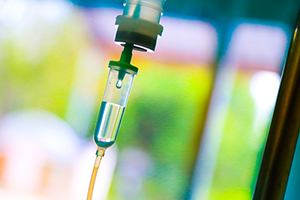As reported in the Journal of Clinical Oncology by Burnett et al, findings from the phase III MRC AML17 trial indicated that four courses of chemotherapy, compared to three courses, reduced the cumulative incidence of relapse and improved relapse-free survival, but not overall survival, in younger patients with acute myeloid leukemia.
Study Details
The trial included 1,017 patients aged 18 to 60 years in remission after two induction courses based on daunorubicin and cytarabine and usually with gemtuzumab ozogamicin. Patients were randomly assigned between April 2009 and December 2014 to receive consolidation with one (n = 510) or two (n = 507) additional courses of chemotherapy.
Initially, 120 patients were assigned to a third course with MACE (amsacrine, etoposide, and cytarabine; n = 58) or MACE plus a fourth course with MidAc (mitoxantrone and cytarabine; n = 62). After a protocol amendment, 897 patients were assigned to consolidation with one (n = 452) vs two (n = 445) courses of high-dose cytarabine. The primary endpoints were cumulative incidence of relapse, relapse-free survival, and overall survival.

Photo credit: Getty
Key Findings
At 5 years, the cumulative incidence of relapse was 50% in the four-course group vs 58% in the three-course group (hazard ratio [HR] = 0.81, 95% confidence interval [CI] = 0.69–0.97, P = .02). Five-year relapse-free survival was 43% vs 36% (HR = 0.83, 95% CI = 0.71–0.98, P = .03). Five-year overall survival was 63% vs 57% (HR = 0.84, 95% CI = 0.69–1.03, P = .09), with the noninferiority of three vs four courses not being established.
The benefit of a fourth course on relapse was significant only when the fourth course was cytarabine (HR = 0.81, 95% CI = 0.68–0.98). The effect size was similar but not significant when MidAC was the fourth course (HR = 0.82, 95% CI = 0.49–1.38).
Among patients with available measurable residual disease (MRD; previously defined as minimal residual disease) data, 5-year overall survival was 73% vs 50% for those who were MRD-negative vs MRD-positive after the first or second induction course. However, there were no significant differences between the four-course vs three-course groups among patients who were MRD-negative (HR = 0.77, 95% CI = 0.45–1.31) or MRD-positive (HR = 0.89, 95% CI = 0.60–1.29) after the first induction course or MRD-negative (HR = 0.78, 95% CI = 0.50–1.24) or MRD-positive (HR = 1.02, 95% CI = 0.62–1.68) after the second induction course.
Among patients with available data, four vs three courses of chemotherapy were associated with significantly better overall survival among patients with:
- Wild-type FLT3 (HR = 0.71, 95% CI = 0.56–0.89)
- Wild-type NPM1 (HR = 0.71, 95% CI = 0.55–0.92)
- Both wild-type FLT3 and NPM1 (HR = 0.65, 95% CI = 0.49–0.86)
- Less than three mutations in other genes (HR = 0.31, 95% CI = 0.14-0.69)
- Presenting white blood cell count < 10 × 109/L (HR = 0.65, 95% CI = 0.49–0.86).
A near-significant benefit was observed among those with favorable-risk cytogenetics (HR = 0.67, 95% CI = 0.44–1.02).
The investigators concluded, “Although a fourth course of high-dose [cytarabine] reduced cumulative incidence of relapse and improved relapse-free survival, it did not result in a significant overall survival benefit. Subsets including those with favorable cytogenetics, those lacking a mutation of FLT3 or NPM1, or those with less than three other mutations may derive survival benefit.”
Alan K. Burnett, MD, of the Paul O’Gorman Leukaemia Research Centre, Glasgow University, Glasgow, is the corresponding author for the Journal of Clinical Oncology article.
Disclosure: For full disclosures of the study authors, visit ascopubs.org.

